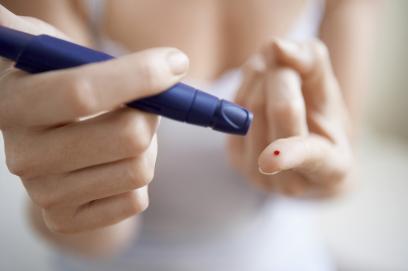
Strengthen blood sugar monitoring to avoid "light enemy"
Insulin pump life
Diabetes is divided into type 1, type 2 and gestational diabetes. No matter which one is obtained, it is inseparable from the monitoring of blood sugar, because this is the most basic reference for doctors to develop treatment plans and understand the condition control. Within the scope of this is the key to delaying the progression of diabetes and complications.
Type 1 diabetes accounts for about 10% of the total number of diabetes. It occurs in children and adolescents. The age of onset is usually less than 30 years old. It is usually more urgent, and the symptoms such as polyphagia, polyuria, polydipsia, and weight loss are more obvious. Often, the function of islets is poor, and lifelong insulin injections are needed to maintain survival. Therefore, in order to control diabetes that requires lifelong treatment, you need to pay attention to details in your life.
Because type 1 diabetes patients have poor islet function, they need to be treated with extraneous insulin. Ideal insulin therapy should be closer to physiological treatment. Insulin in different classes of action can be used to supplement both basal and postprandial insulin for more effective control of whole-day blood glucose. At present, the best intensive treatment in the clinic is the insulin pump. Compared with the common insulin treatment, the insulin pump treatment has a better blood sugar control effect, and the blood sugar regulation is more flexible.
Patients treated with insulin should monitor their blood glucose at least 5 times a day at the beginning of treatment. After reaching the treatment target, blood glucose can be monitored 2 to 4 times a day. If oral hypoglycemic agents are used and/or lifestyle interventions, blood glucose control is up to standard. After monitoring blood glucose 2 to 4 times a week. It can be said that the quality of type 1 diabetes control depends to a large extent on whether the patient has the habit of self-testing blood sugar. Only patients who have self-tested blood glucose several times a day are qualified to be responsible for their own sugar. Friends."
At present, diabetes is incurable. What we can do is to control the disease and delay the occurrence and progress of complications. Therefore, it is very important to strengthen daily monitoring and develop good recording habits. It is very important for the control of the disease and the adjustment of treatment plans. .
Self-monitoring items: blood glucose (fasting blood glucose, 2 hours postprandial blood glucose); weight; blood pressure.
Time and control criteria for blood glucose monitoring IDF-WPR 2002 standard
Control standard
Blood sugar mmol/L
Well controlled
general
bad
Fasting
4.4-6.1
≤7.0
>7.0
2 hours after a meal
4.4-8.0
≤10.0
>10.0
In the process of monitoring blood sugar, sugar friends should avoid the phenomenon of “light enemy” and “fear of trouble”. Some patients have no feeling when their blood sugar is slightly high. They think that it is not necessary to measure the blood pressure. This kind of behavior of ignoring slightly high blood sugar is easy to cause chronic complications. It is too late for patients to have blood sugar after symptoms. Some patients are afraid The trouble is that it doesn't matter if you measure blood glucose a few times. It is not enough to measure it once a few months. This is not enough, because blood sugar can be affected by diet, activity, drugs, emotions, etc. If blood sugar is in disorder for a long time. The measures taken to control sugar are very blind, and the consequences of hyperglycemia or hypoglycemia are unimaginable; especially for patients treated with insulin, in order to observe the appropriate dose and avoid hypoglycemia, the number of measurements should be more. In short, people with diabetes should develop the habit of self-monitoring blood glucose, which is beneficial to the prevention and treatment of diabetes.


